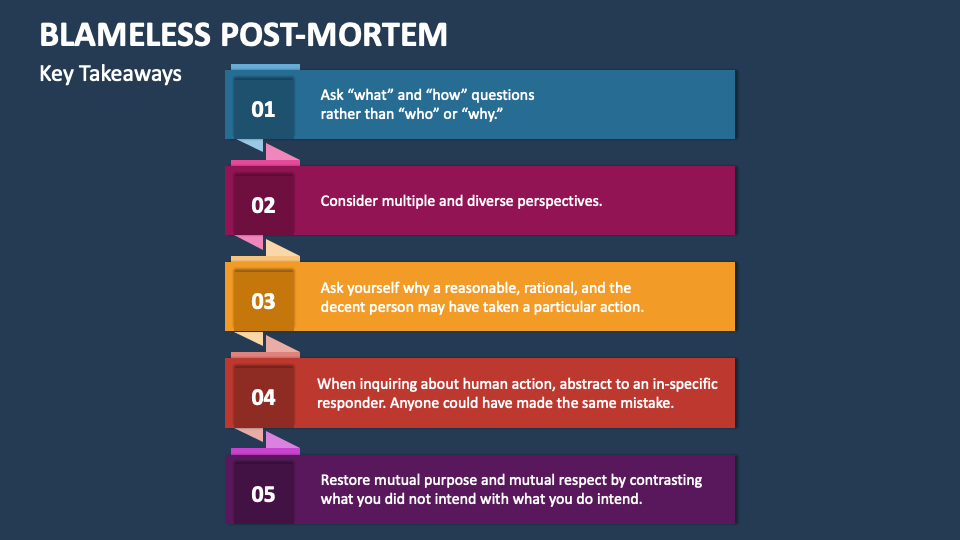
Analyzing incidents after the dust settles is crucial for preventing future occurrences and optimizing your systems. Here’s a look at some key players in the post-mortem analysis space in 2024:
Dedicated Post-Mortem Tools:
- Blameless: Focused on creating a safe space for blameless retrospectives, with features like facilitated discussions, asynchronous contributions, and action item tracking.
- Incident.io: Offers post-mortem functionality within its incident management platform, allowing seamless connection between incident response and analysis.
- Scribe: Specializes in capturing knowledge from incidents through transcripts, recordings, and notes, facilitating efficient post-mortem analysis and documentation.
Collaboration and Communication Tools:
- Slack: Popular team communication platform that can be leveraged for post-mortem discussions, document sharing, and action item tracking.
- Google Docs/Sheets: Collaborative editing tools for creating and revising post-mortem reports, accessible and easy to use.
- Zoom/Microsoft Teams: Video conferencing platforms can facilitate live discussions and knowledge sharing during post-mortems.
Monitoring and Logging Tools:
- Datadog: Comprehensive monitoring platform that provides retrospective incident data and analysis through dashboards and dashboards.
- New Relic: Offers root cause analysis tools and detailed incident timelines for post-mortem investigations.
- ELK Stack: Powerful log management solution that allows slicing and dicing data for in-depth analysis of incident sequences.
Other Options:
- Squadcast: Incident response platform with post-mortem features like blameless incident reviews and action item management.
- BugSnag: Error monitoring and bug tracking platform that offers insights into incident trends and historical data for post-mortem analysis.
- XMatters: Incident management platform with post-mortem reporting capabilities for analyzing trends and identifying recurring issues.
Choosing the Right Tool:
The best tool depends on your needs and preferences:
- Team size and culture: Blameless tools promote psychological safety, while Slack or video conferencing might work for smaller teams.
- Frequency and complexity of incidents: Dedicated tools offer targeted features, while broader collaboration platforms might suffice for infrequent incidents.
- Integration needs: Consider compatibility with existing monitoring and communication systems.
- Budget: Open-source options like ELK Stack are available, while dedicated tools often have paid plans.
Best Practices for Effective Post-Mortems:
- Gather all relevant data: Logs, metrics, communication records, and human input are crucial for understanding the incident.
- Focus on blameless analysis: Encourage open discussion and identify systemic issues, not individual blame.
- Prioritize actionable insights: Extract clear steps for improvement and prevention.
- Document and share findings: Create accessible post-mortem reports for future reference and learning.
- Track progress on action items: Ensure identified improvements are implemented.
Always keep in mind, the power of post-mortems lies in leveraging them for continuous improvement. By choosing the right tools and actively applying best practices, you can prevent similar incidents and build a more resilient system.
Say goodbye to the hassles of bike ownership! MotoShare.in offers affordable rentals, whether you need a scooter for errands, a bike for a road trip, or a reliable ride to explore new cities.

 Starting: 1st of Every Month
Starting: 1st of Every Month  +91 8409492687
+91 8409492687  Contact@DevOpsSchool.com
Contact@DevOpsSchool.com
